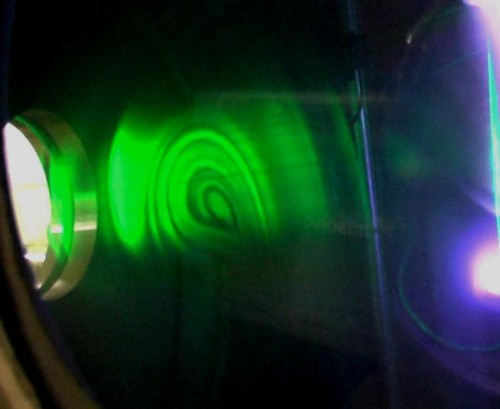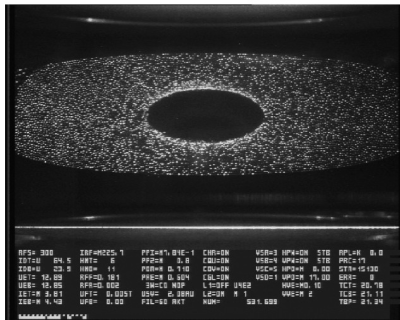Plasma Crystal Experiment and Science at the ISS

In November, it announced the termination of the Plasma Crystal experiment at the ISS. Special equipment for the experiment was placed in the Albert Einstein cargo ship and burned with it over the Pacific Ocean. Thus ended a long story, probably the most famous space experiment. I want to talk about it and tell a little about science on the ISS as a whole.
Where are the discoveries?
First of all, it is necessary to make a somewhat demotivating introduction. Modern science is not a computer game, where, in principle, there is no useless research, and each discovery gives a noticeable bonus. And, alas, the days have passed when a lone genius like Edison alone could invent many radically life-changing devices. Now science is a methodical blind movement along all accessible paths, which is carried out by large organizations, lasts for years and can lead to zero results. Therefore, information on research on the ISS, which is published regularly, without adaptation to the popular science form it looks, to be honest, very boring. At the same time, some of these experiments are really interesting, and if they do not promise us instant fabulous results, they give hope for a better understanding of how the world works and where we should move for new fundamental and applied discoveries.
Experiment idea
It is known that a substance can reside in four phase states - solid, liquid, gaseous, and plasma. Plasma is 99.9% of the mass of the universe, ranging from stars to interstellar gas. On Earth, plasma is lightning, the northern lights, and, for example, gas discharge lamps. Plasma containing dust particles is also very common - these are planetary rings, comet tails, interstellar clouds. And the idea of the experiment consisted in artificially creating a plasma with dust microparticles and observing its behavior under conditions of terrestrial gravity and microgravity.

In the first version of the experiment (in the picture), an ampoule with dusty plasma was illuminated by the rays of the Sun, dust in the plasma was illuminated by a laser, and the illuminated area was recorded on a camera. Subsequently, more complex experimental facilities were used. The Black Barrel, which burned out along with Albert Einstein, was the installation of the third generation.

results
The experiments in microgravity met the expectations of scientists - the dusty plasma in its structure became crystalline or showed the properties of liquids. Unlike an ideal gas, in which molecules move randomly (see thermal motion ), dusty plasma, being a gas, exhibits the properties of solid and liquid bodies - melting and evaporation processes are possible.
At the same time, there were unexpected discoveries. For example, a cavity could have arisen in the crystal. Why - is still unknown.

But the most unexpected discovery was that dusty plasma under certain conditions formed spiral structures similar to DNA! Perhaps even the origin of life on Earth is somehow related to dusty plasma.

Prospects
The results of many years of research on the experiment "Plasma Crystal" show a fundamental possibility:
- Formations in dusty plasma of nanomaterials with unique properties.
- The deposition of materials from dusty plasma onto a substrate and the production of new types of coatings - multilayer, porous, composite.
- Air purification from industrial and radiation emissions and during plasma etching of microcircuits.
- Plasma sterilization of inanimate objects and open wounds on living things.
Unfortunately, all this beauty will become available no earlier than in ten years. Because according to the results of the work, it is necessary to build experimental applied installations, prototypes, conduct tests or clinical studies, organize mass production.
Additional materials
If you want to know more about this experiment in more detail, I can recommend the following materials:
- The third series of "Space Odyssey, Century XXI." Unique video frames. About "Plasma Crystal" talk with 8:50
- An article in Science and Life.
- A very detailed description of the experiment. Non-physicists will be obscure.
- An article on Membrane about DNA-like structures in dusty plasma.
- Another description of the experiment.
And another science?
The "plasma crystal" is completed, however, new experiments on the ISS begin regularly. Probably the most recent is the Virtual experiment, which studies the processes that occur with eyes in zero gravity. There are experiments that have been going on daily for many years and will go further in the same mode. These include “Hurricane” - the study of the course and predictions of catastrophic meteorological phenomena, “Seiner” - the search for fish from space or “Endurance” - the study of what happens to materials exposed in a vacuum. During the current expedition, 600 works are planned for 43 experiments. Thanks to the TV "Roscosmos", the November 23 issue of the Cosmonautics program they devoted to the story about science on the ISS:
Probably, in a sense, the ISS is a geek's dream. A sort of hybrid garage, laboratory and hotel. When you repair the toilet in the morning, during the day you pull the LAN cable at the exit to outer space, and in the evening you move the fundamental science. And our beautiful Earth in the porthole ...
